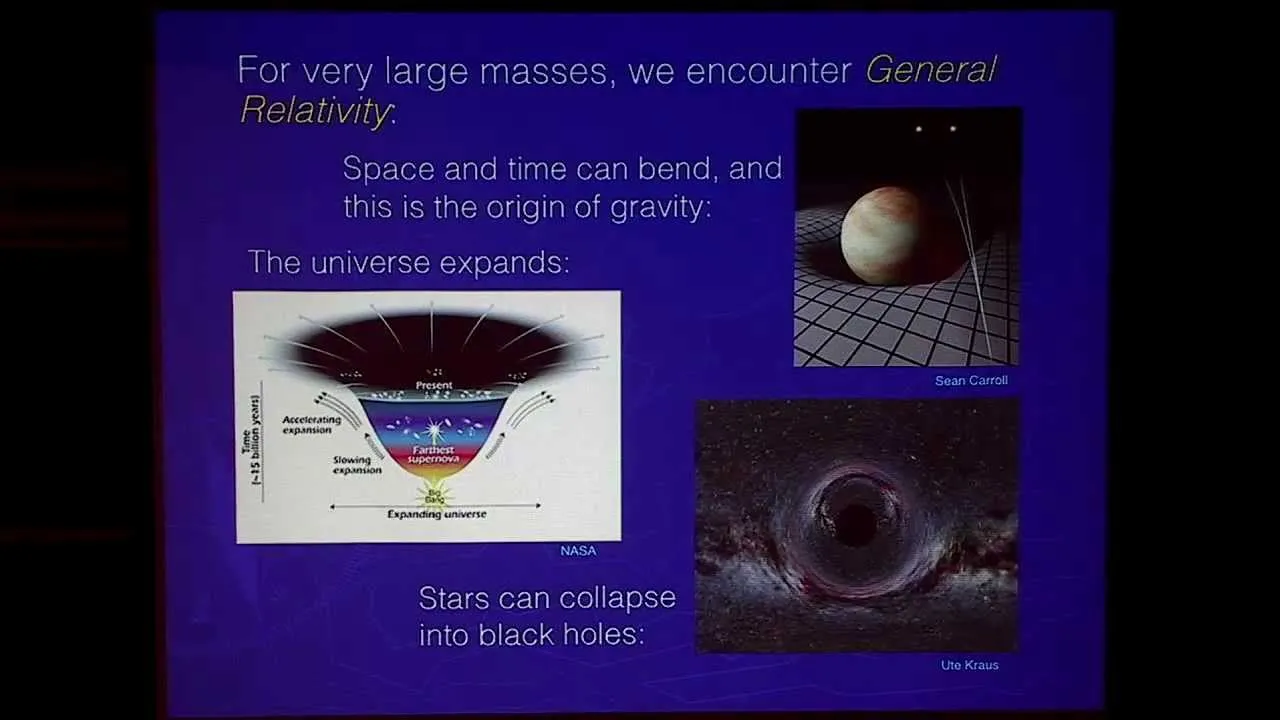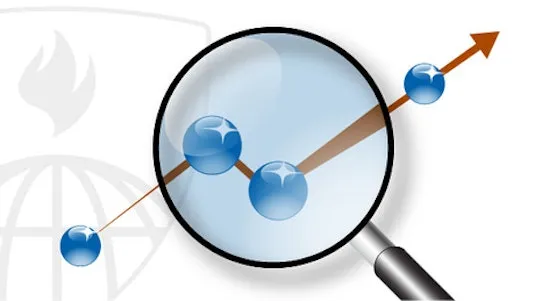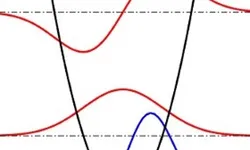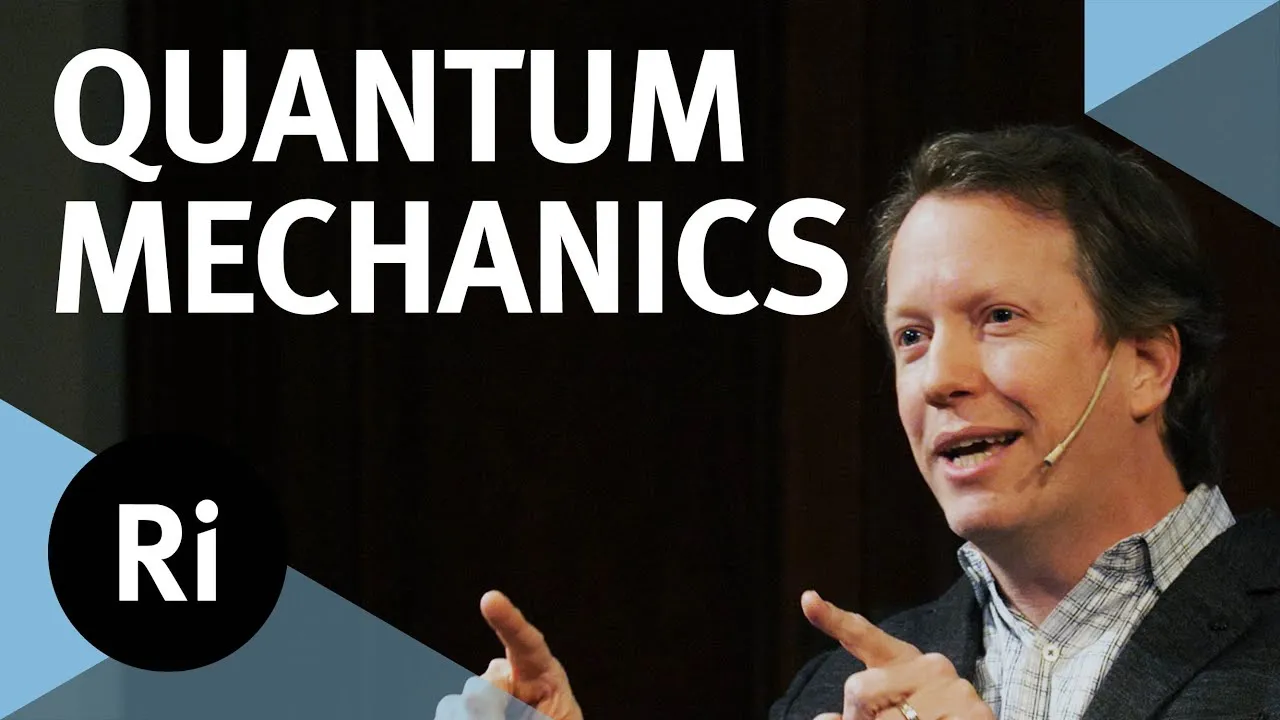
Gravity and Quantum Mechanics - The Quest for Unification 
Joe Polchinski explores the quest to unify quantum mechanics and relativity in his 2013 KITP lecture. He examines the implications of these theories when applied to the very small, fast, and massive, and how they can be reconciled. ▼
ADVERTISEMENT
Course Feature
![]() Cost:
Cost:
Free
![]() Provider:
Provider:
Youtube
![]() Certificate:
Certificate:
No Information
![]() Language:
Language:
English
![]() Start Date:
Start Date:
Self Paced
Course Overview
❗The content presented here is sourced directly from Youtube platform. For comprehensive course details, including enrollment information, simply click on the 'Go to class' link on our website.
Updated in [March 06th, 2023]
Joe Polchinski's course, Gravity and Quantum Mechanics - The Quest for Unification, provides an overview of the fundamental theories of quantum mechanics and relativity. The course examines how these theories interact when looking at the very small, the very fast, or the very massive. Topics covered include the basics of quantum mechanics, the principles of relativity, and the implications of the theories for the universe. The course also explores the potential for unifying the two theories and the implications of such a unification. Participants will gain an understanding of the fundamental theories and their implications for the universe.
[Applications]
The application of this course is to gain a better understanding of the relationship between gravity and quantum mechanics. It is suggested that students use the knowledge gained from this course to explore the implications of the unification of these two theories. Additionally, students should use the course to develop a deeper understanding of the implications of the theories of relativity and quantum mechanics on the physical world. Finally, students should use the course to explore the potential implications of the unification of gravity and quantum mechanics on the universe.
[Career Paths]
1. Quantum Physicist: Quantum physicists study the behavior of matter and energy at the atomic and subatomic level. They use mathematical models and experiments to understand the behavior of particles and forces at the quantum level. As the field of quantum mechanics continues to develop, quantum physicists are increasingly in demand to help develop new technologies and applications.
2. Astronomer: Astronomers use telescopes and other instruments to observe and study the universe. They use their observations to develop theories about the formation and evolution of galaxies, stars, and planets. As the field of quantum mechanics continues to advance, astronomers are increasingly looking to quantum mechanics to explain the behavior of the universe on the smallest scales.
3. Data Scientist: Data scientists use data to develop insights and solutions to complex problems. They use a variety of techniques, including machine learning, to analyze large datasets and uncover patterns and trends. As the field of quantum mechanics continues to advance, data scientists are increasingly looking to quantum mechanics to develop new algorithms and models for analyzing data.
4. Software Engineer: Software engineers develop software applications and systems. They use a variety of programming languages and technologies to create software solutions for businesses and organizations. As the field of quantum mechanics continues to advance, software engineers are increasingly looking to quantum mechanics to develop new applications and systems.
[Education Paths]
1. Physics: Physics is the study of the fundamental laws of nature and the physical universe. It is a broad field that encompasses many sub-disciplines, including quantum mechanics, relativity, and gravity. Developing trends in physics include the exploration of dark matter and dark energy, the search for a unified theory of quantum mechanics and relativity, and the development of new technologies such as quantum computing.
2. Mathematics: Mathematics is the study of abstract structures and their relationships. It is a fundamental tool for understanding the physical universe, and is used in many areas of physics, including quantum mechanics and relativity. Developing trends in mathematics include the exploration of new mathematical structures, the development of new algorithms, and the application of mathematics to other fields such as computer science and engineering.
3. Computer Science: Computer science is the study of algorithms and data structures, and their applications in computing. It is a rapidly growing field, and is used in many areas of physics, including quantum computing and simulations of physical systems. Developing trends in computer science include the development of artificial intelligence, the exploration of new algorithms, and the application of computer science to other fields such as biology and medicine.
4. Engineering: Engineering is the application of scientific knowledge to the design and construction of physical systems. It is a broad field that encompasses many sub-disciplines, including mechanical engineering, electrical engineering, and aerospace engineering. Developing trends in engineering include the development of new materials, the exploration of new technologies, and the application of engineering to other fields such as medicine and robotics.
Course Provider

Provider Youtube's Stats at AZClass
Discussion and Reviews
0.0 (Based on 0 reviews)
Explore Similar Online Courses

Spanish Cactus - Learn Spanish ASAP

Case-Based Introduction to Biostatistics

Python for Informatics: Exploring Information

Social Network Analysis

Introduction to Systematic Review and Meta-Analysis

The Analytics Edge

DCO042 - Python For Informatics

Causal Diagrams: Draw Your Assumptions Before Your Conclusions

Whole genome sequencing of bacterial genomes - tools and applications

Foundations of Quantum Mechanics

A Brief History of Quantum Mechanics - with Sean Carroll

Mastering Quantum Mechanics Part 3: Entanglement and Angular Momentum
 Related Categories
Related Categories
 Popular Providers
Popular Providers
Quiz
 Submitted Sucessfully
Submitted Sucessfully
1. What is the main topic of the course?
2. Who is the instructor of the course?
3. What does the course cover?
4. When was the course given?


Start your review of Gravity and Quantum Mechanics - The Quest for Unification